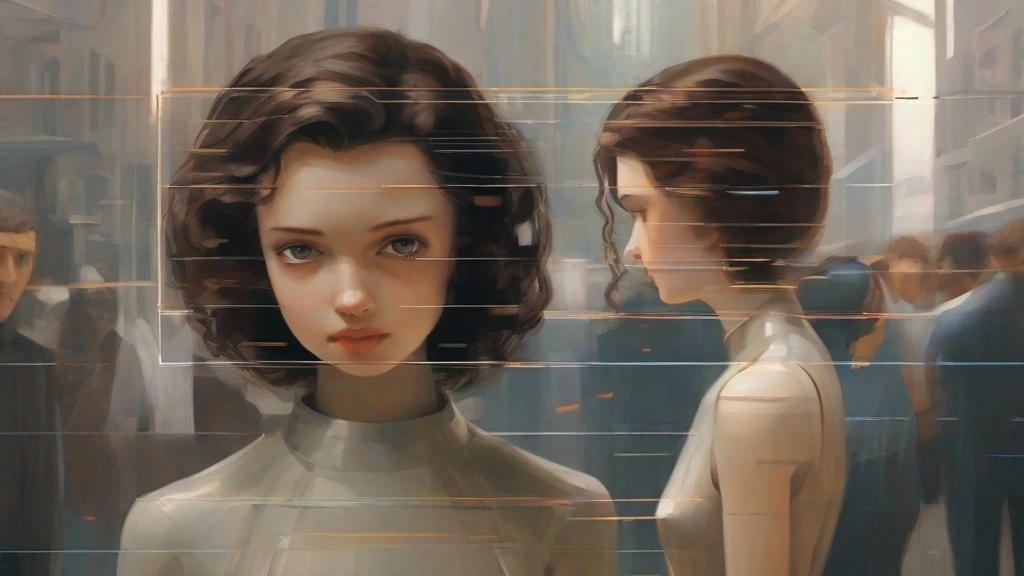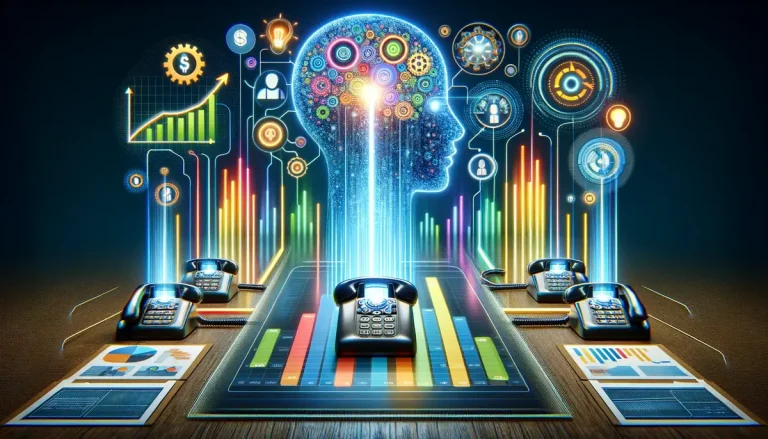Image recognition might seem like a breeze for AI nowadays, effortlessly identifying objects in clean, perfect photos. But step into the messy world of real-world visuals, with blurry phone snapshots and puzzling glimpses, and even the smartest models can stumble. The culprit? Image complexity, the hidden factor that throws a wrench in their image recognition accuracy.
Imagine encountering a cryptic painting at a museum. You squint, analyze details, and maybe even ponder its meaning before it clicks. Similarly, AI models need time to untangle complex images, packed with confusing details, unusual lighting, or unexpected compositions. This blog dives into the fascinating challenge of image complexity and how researchers are making AI vision more robust and boosting image recognition accuracy in the real world.
Forget the misconception of flawless AI recognition – the truth is, not all images are created equal in the eyes of AI. Just like a human, an AI model’s image recognition accuracy hinges on the image’s clarity and complexity. This explains why your phone might struggle with that fuzzy “what is it?” photo on the couch – it’s a visual puzzle that trips up both humans and machines.
Enter the innovative “Minimum Viewing Time” (MVT) metric developed by MIT researchers. MVT measures how long it takes people to correctly identify an object in an image, revealing which visuals pose challenges for both human and AI perception. This powerful tool shines a light on the hidden complexities that impact image recognition accuracy, paving the way for more robust AI models that can navigate the messy, beautiful world of real-world visuals.
Read also: 30 Best AI Assistants You Need for 2024
Human vs. Machine Image Recognition
The intricate dance of image recognition involves two distinct performers: humans and machines, each with their unique strengths and limitations. Understanding the nuances of how they perceive images is pivotal in unveiling the full spectrum of image recognition accuracy.
Humans, with their innate visual and cognitive abilities, often excel at interpreting images, even those laden with complexity. Our brains are wired to discern subtle details, context, and patterns, allowing us to make sense of visual information swiftly. This proficiency, however, is not just about recognizing the obvious; it’s about intuitively navigating through visual ambiguities and extracting meaning from them.
On the other side of the spectrum are AI models, engineered to mimic this human ability to recognize and interpret images. These models, powered by deep learning and neural networks, have shown remarkable capabilities in parsing through vast datasets of images. Yet, they stumble when confronted with complex, ambiguous, or low-quality images. The challenge intensifies with images that require contextual understanding or those that deviate from the norm, revealing a gap in AI’s ability to mimic the depth of human visual cognition.
The contrast between human and machine perception becomes more evident when AI systems are tested against images that are easily recognizable to humans but prove to be a conundrum for machines. This disparity underscores a fundamental limitation in current AI technologies – while they are adept at processing clear, well-defined images, their proficiency wanes in the face of visual complexity.
Insights from MIT Researchers
The quest to understand and improve image recognition accuracy has led researchers from MIT’s Computer Science and Artificial Intelligence Laboratory (CSAIL) to delve deep into the realm of AI vision. Their groundbreaking study sheds light on the complexities and challenges inherent in AI-based image recognition, offering pivotal insights that could redefine the trajectory of AI development.
One of the study’s most striking revelations is the concept of “Minimum Viewing Time” (MVT). This metric measures the time required for a human to accurately recognize an image, thereby providing a benchmark for assessing the complexity of visual data. The study found that, unlike humans who can quickly adapt and discern images, AI systems often falter with images that have longer MVTs. This discrepancy indicates that the current AI models, despite their sophistication, are still playing catch-up with the human brain’s ability to process complex visual information.
Another key finding is the varying performance of AI models when confronted with different types of images. While AI systems show remarkable efficiency in recognizing straightforward, clear-cut images, their effectiveness significantly drops with more complex visuals. This variation in performance highlights a crucial gap in AI training, where models are often exposed to and thus optimized for less complicated images, creating a skewed perception of their overall effectiveness.
The MIT research also delves into the nuances of how image complexity affects AI learning algorithms. Images that are more intricate or less prototypical than usual tend to throw AI off its game, suggesting that current AI models lack the advanced cognitive processing capabilities inherent in human vision. This insight is particularly critical as it underscores the need for a more diversified approach in AI training, ensuring that models are exposed to and can learn from a wider range of visual stimuli.
These findings from MIT are more than just academic musings; they have profound implications for the future of AI development. By highlighting the limitations of current AI models in handling complex images, the research paves the way for more robust, versatile, and human-like AI systems that can navigate the intricate tapestry of the visual world with greater proficiency.
Impact on AI Development
The insights gleaned from MIT’s research into image recognition accuracy are not just academic achievements; they represent pivotal guideposts for the future trajectory of AI development. Understanding how AI struggles with complex images has profound implications for how we train, evaluate, and deploy AI models in various sectors.
Enhancing AI Training Protocols: One of the most immediate impacts of this research is on AI training methodologies. Traditional training regimes, which often rely on large datasets of relatively straightforward images, may no longer suffice. To create AI systems that can match human-level proficiency in image recognition, developers must incorporate a more diverse range of images, especially those that challenge human recognition abilities. This approach will enable AI models to learn from a broader spectrum of visual information, enhancing their ability to handle real-world complexities.
Redefining Performance Evaluation Metrics: The concept of Minimum Viewing Time (MVT) introduced by the MIT team offers a novel way to evaluate AI performance. By using MVT as a benchmark, developers can more accurately gauge an AI model’s ability to process complex images, a critical factor often overlooked in traditional evaluation metrics. This shift in evaluation criteria promises to deliver a more nuanced and realistic assessment of AI capabilities, moving beyond mere accuracy percentages to understand how AI deals with the intricacies of visual data.
Preparing AI for Real-World Applications: The insights from this study are especially crucial as AI continues to make inroads into sectors where accurate image recognition is vital. In areas such as healthcare, autonomous vehicles, and security, the ability of AI to accurately interpret complex images can have significant consequences. By incorporating these new understandings into AI development, we can ensure that AI systems are not only more efficient but also safer and more reliable in real-world scenarios.
Bridging the Human-AI Perception Gap: Lastly, this research illuminates the gap between human and machine vision, offering a roadmap to bridge this divide. By understanding and mimicking the human ability to process complex images, AI developers can strive towards creating models that are not just artificially intelligent but also perceptually astute.
Read also: AI Regulations: Should AI be Regulated?
Image Recognition Accuracy: Broader Applications
The implications of the MIT research on image recognition accuracy extend far beyond the confines of academic laboratories. Understanding the complexities of image recognition has significant applications across a spectrum of fields where AI plays a pivotal role.
Healthcare: In the realm of healthcare, accurate image recognition is paramount. AI systems are increasingly used to analyze medical imagery, such as MRIs, X-rays, and CT scans. The ability of these systems to discern subtle abnormalities or complex patterns can be a matter of life and death. Incorporating findings from the MIT study can lead to more sophisticated AI models that are better equipped to assist healthcare professionals in diagnosing and treating patients.
Autonomous Vehicles: The safety and effectiveness of autonomous vehicles hinge on their ability to accurately interpret their surroundings. Complex visual environments, like busy urban streets, present a myriad of challenges for AI systems, from recognizing pedestrians to understanding traffic signs. Improving the ability of these systems to process complex images can enhance the safety and reliability of autonomous vehicles.
Security and Surveillance: In security applications, AI’s ability to recognize faces, objects, and activities accurately and rapidly is crucial. By training AI systems to better handle complex images, they can become more effective in identifying potential threats, ensuring public safety, and enhancing surveillance capabilities.
Retail and Consumer Services: AI is also transforming the retail industry, from personalized recommendations to inventory management. Understanding image complexity can improve the accuracy of product recognition, streamline supply chain processes, and enhance customer experiences.
Environmental Monitoring: AI is increasingly used for monitoring wildlife, tracking environmental changes, and managing natural resources. The ability to accurately interpret complex images, such as satellite imagery or wildlife photographs, can significantly impact conservation efforts and environmental management strategies.
Art and Cultural Heritage: In the field of art and cultural heritage, AI assists in the analysis and restoration of artworks. Understanding the complexity of images can aid in identifying the origins of artworks, detecting forgeries, and preserving cultural heritage.
In each of these applications, the ability of AI to accurately process complex images is critical. The insights from the MIT study underscore the need for AI systems that can navigate the nuances of visual information, ensuring they are prepared for the multifaceted challenges of the real world. As AI continues to evolve, its ability to understand and interpret complex images will undoubtedly unlock new possibilities, driving innovation and progress across diverse sectors.







